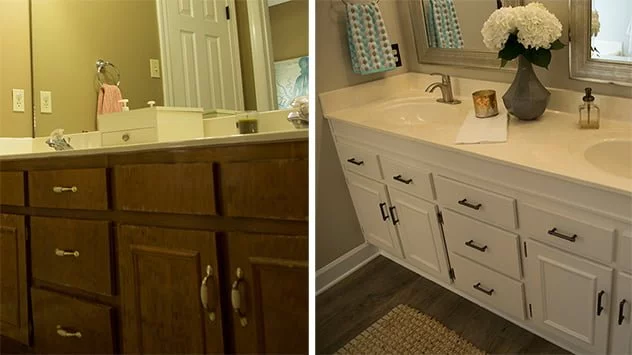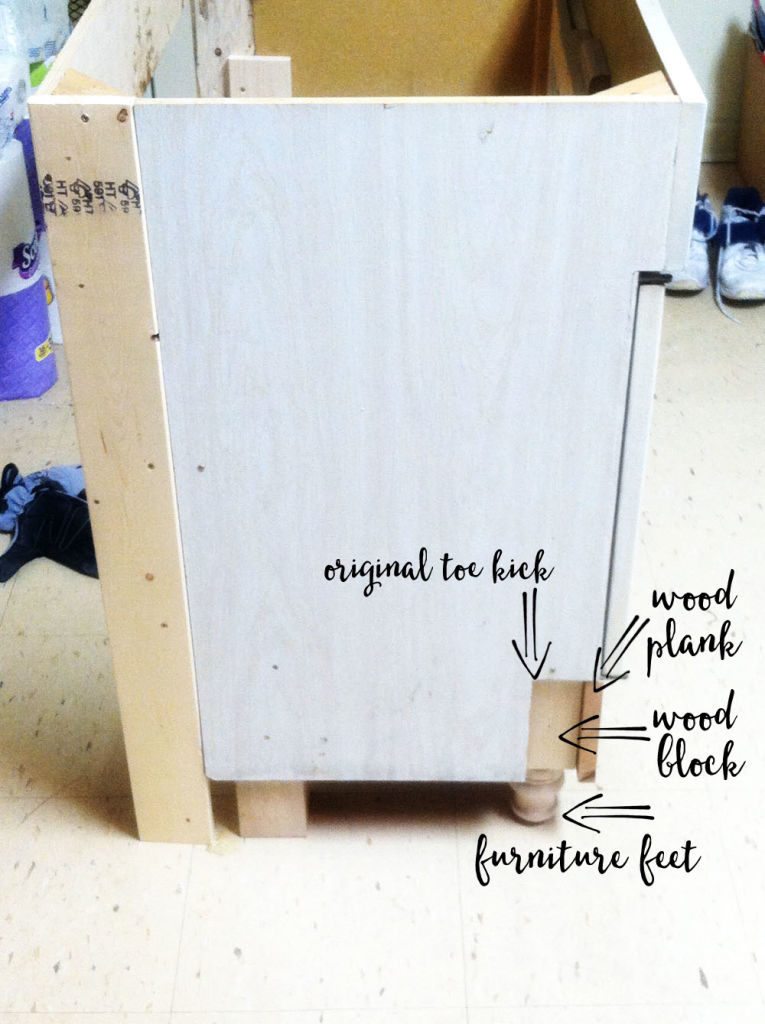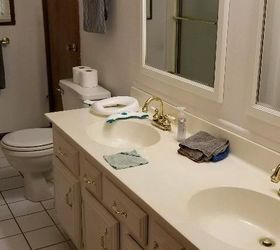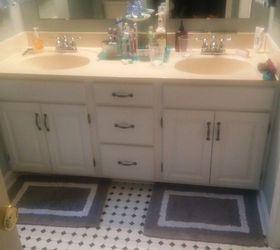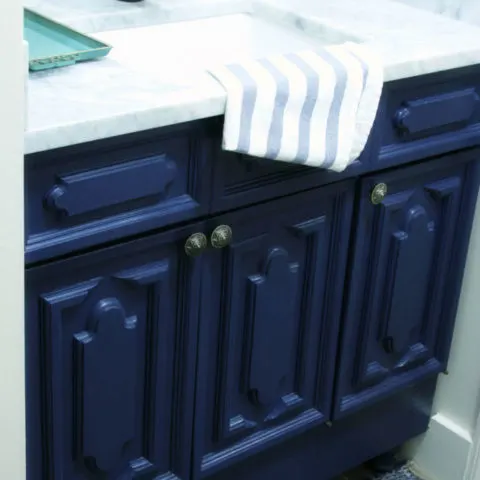Assessing the Need for a Higher Bathroom Vanity
Having a comfortable and functional bathroom is essential for any homeowner. One aspect that often goes unnoticed is the height of the bathroom vanity. While standard vanity heights work for most people, there are instances where raising the vanity height becomes necessary. Let’s discuss the reasons why you might need a higher bathroom vanity and how to assess if it’s the right decision for you.
- Physical Comfort: One of the most common reasons for raising the bathroom vanity height is to improve physical comfort. If you or someone in your household is taller than average, constantly bending over a low vanity can lead to back strain and discomfort. Assess your comfort level by considering how often you use the vanity and how it affects your posture. If you find yourself hunching over or experiencing discomfort, it might be time to consider raising the vanity height.
- Accessibility: Another important factor to consider when assessing the need for a higher bathroom vanity is accessibility. If you or a family member has mobility challenges, a standard-height vanity may be difficult to use. Raising the vanity height can make it easier to reach the sink, wash your hands, and perform other daily activities without straining or relying on assistance. Evaluate the needs of everyone using the bathroom to determine if a higher vanity would improve accessibility.
- Style and Aesthetic Appeal: Sometimes, the decision to raise the bathroom vanity height is purely for aesthetic reasons. A higher vanity can give your bathroom a more modern and luxurious look. Consider the overall style and theme of your bathroom. If you have high ceilings or other elements that lend themselves to a taller vanity, it might be worth considering to enhance the overall design and ambiance of the space.
- Storage and Organization: Raising the bathroom vanity height can also provide additional storage and organization options. By increasing the space between the countertop and the floor, you can add extra shelves or drawers, maximizing the functionality of your vanity. Evaluate your storage needs and consider if a higher vanity would allow you to better organize your bathroom essentials.

Simple Steps to Raise the Bathroom Vanity Height
If you have assessed the need for a higher bathroom vanity and have decided to proceed with the adjustment, you might be wondering how to go about it. While it may seem like a daunting task, raising the bathroom vanity height can be accomplished with a few simple steps. We will guide you through the process of raising your bathroom vanity height in a DIY fashion.
Measure and Plan: The first step in raising the bathroom vanity height is to measure the existing vanity and determine how much height you want to add. Measure the height of the current vanity and decide on the desired additional height. Remember to consider factors such as the height of the sink, plumbing fixtures, and any other components that may be affected by the adjustment. Once you have the measurements, create a plan to ensure a smooth and successful project.
Remove the Vanity: To raise the vanity height, you will need to remove the existing vanity from the wall. Start by turning off the water supply and disconnecting the plumbing connections. Use a screwdriver or drill to remove any screws or fasteners securing the vanity to the wall. Carefully detach the vanity from the wall and set it aside, making sure to protect the floor and other surfaces.
Build a Base: To add height to the vanity, you will need to create a base to support it. Measure and cut pieces of wood or other suitable materials to the desired height. Secure these pieces together to form a sturdy base that matches the dimensions of the vanity. Ensure the base is level and stable before proceeding.
Attach the Base and Reinstall the Vanity: Place the base on the floor where the vanity will sit. Use screws or adhesive to secure the base to the floor, ensuring it is level and secure. Once the base is in place, carefully position the vanity on top of it. Make sure the vanity is level and aligned with the base. Secure the vanity to the base using screws or other appropriate fasteners.
Reconnect the Plumbing: With the vanity securely in place, it’s time to reconnect the plumbing fixtures. Carefully reconnect the water supply lines, ensuring they are tight and leak-free. Reattach the drain pipe and any other plumbing connections. Turn on the water supply and check for any leaks. If everything is in order, your raised bathroom vanity is now ready to use.
Hiring Contractors for a Seamless Vanity Height Adjustment
While raising the bathroom vanity height can be done as a do-it-yourself project, it may require professional expertise in certain cases. Hiring a contractor can ensure a seamless and well-executed vanity height adjustment, especially if it involves complex modifications or if you are not confident in your abilities. Let’s explore the benefits of hiring contractors and guide you through the process of finding the right professional for your vanity height adjustment project.
Assessing the Scope of the Project: Before hiring a contractor, assess the scope of your vanity height adjustment project. Consider factors such as the complexity of the modifications, the need for plumbing or electrical work, and any structural changes that may be required. If the project involves extensive alterations or if it requires specialized skills, it is advisable to hire a contractor with experience in bathroom remodeling.
Research and Gather Recommendations: Start by conducting thorough research to find reputable contractors in your area. Ask friends, family, or neighbors for recommendations, and read online reviews and testimonials to gauge the quality of their work. Look for contractors who specialize in bathroom remodeling or have experience with vanity height adjustments. Compile a list of potential contractors that you can reach out to for further evaluation.
Request Quotes and Compare: Contact the contractors on your list and request quotes for your vanity height adjustment project. Provide them with detailed information about the modifications you require and ask for a breakdown of costs. It is important to compare quotes from multiple contractors to ensure you are getting a fair price. Consider not only the cost but also the quality of materials, timeline, and any additional services offered.
Check Licenses and Insurance: Verify that the contractors you are considering have the necessary licenses and insurance to perform the work. A reputable contractor should be licensed and insured to protect both you and your workers. Request proof of their license and insurance coverage and ensure they are up to date. This will give you peace of mind knowing that you are working with professionals who meet the requirements.
Review Portfolios and References: Ask the contractors for portfolios or examples of their previous work. This will give you an idea of their style, craftsmanship, and attention to detail. Additionally, request references from past clients and take the time to contact them. Ask about their experience working with the contractor, the quality of the work, and their overall satisfaction. This will help you gauge the contractor’s reliability and professionalism.
Sign a Detailed Contract: Once you have selected a contractor, ensure that all the details of the project are outlined in a written contract. The contract should include specifics such as the start and completion dates, materials to be used, payment schedule, and any warranties or guarantees. Review the contract thoroughly and make sure you understand and agree to all the terms before signing.
Creative Ideas for Utilizing the Increased Vanity Height
Raising the height of your bathroom vanity opens up new possibilities for creative and functional design. With additional space between the countertop and the floor, you can explore various ideas to optimize storage, enhance aesthetics, and improve the overall functionality of your bathroom. Below are some creative ideas for utilizing the increased vanity height to transform your bathroom into a stylish and organized space.
Add Open Shelves: One way to make the most of the increased vanity height is by incorporating open shelves. Install a set of floating shelves or open cubbies underneath the vanity to display decorative items, store towels or baskets, or showcase your favorite bathroom accessories. This not only adds storage space but also introduces a visually appealing element to the bathroom.
Install Pull-Out Drawers: Maximize the functionality of your raised vanity by incorporating pull-out drawers. These can be installed below the countertop to provide easy access to toiletries, cleaning supplies, and other bathroom essentials. Pull-out drawers are a great organizational solution, allowing you to neatly categorize and store items, making them easily accessible when needed.
Incorporate a Vanity Tower: Consider adding a vanity tower to your bathroom design. A vanity tower is a tall, narrow cabinet that fits between the countertop and the ceiling. This additional storage unit provides extra shelves or drawers for storing items such as towels, linens, or beauty products. It not only enhances storage capacity but also adds a touch of elegance and sophistication to the bathroom.
Utilize Hanging Storage: Take advantage of the increased vanity height by incorporating hanging storage solutions. Install hooks or towel racks on the side or back of the vanity to hang towels, robes, or other bathroom accessories. You can also attach small baskets or wire organizers to hold toiletries or hair-styling tools. Hanging storage helps keep your countertops clear and maintains a tidy and organized bathroom space.
Create a Makeup Vanity Area: If you enjoy applying makeup or getting ready in the bathroom, utilize the increased vanity height to create a dedicated makeup vanity area. Install a large mirror above the countertop and add lighting fixtures on either side for optimal visibility. Incorporate a small stool or chair for comfortable seating. This designated space allows you to focus on your beauty routine while keeping your bathroom countertops clutter-free.
Introduce Decorative Elements: With the increased height of the vanity, consider incorporating decorative elements that enhance the overall aesthetics of your bathroom. Install decorative tiles or a backsplash above the countertop to add a pop of color or pattern. Place potted plants or decorative vases on the vanity surface to bring a touch of nature into the space. These decorative elements can elevate the visual appeal of your bathroom and create a welcoming atmosphere.
Ensuring a Sturdy and Secure Higher Bathroom Vanity
When raising the height of your bathroom vanity, it is crucial to ensure that it is sturdy and secure. A properly installed and stable vanity not only enhances the functionality of your bathroom but also prevents accidents or damage. Here are important considerations and steps to ensure that your higher bathroom vanity is built to last and provides a safe and reliable addition to your space.
Assess the Structural Integrity: Before proceeding with the installation of a higher bathroom vanity, assess the structural integrity of the existing space. Ensure that the walls and floor can support the additional weight. If there are any concerns about the stability of the area, it is advisable to consult a professional contractor or structural engineer to evaluate and reinforce the space as necessary.
Use High-Quality Materials: To ensure a sturdy and secure higher bathroom vanity, it is vital to use high-quality materials. Opt for solid wood or plywood for the base and frame, as these materials offer strength and durability. Choose quality screws, brackets, and fasteners that are appropriate for the weight and size of the vanity. Investing in good materials will contribute to the long-term stability of the vanity.
Properly Anchor to the Wall: To prevent the vanity from tipping or shifting, it is crucial to properly anchor it to the wall. Use sturdy brackets or L-shaped metal braces to secure the vanity to the wall studs. This will provide additional stability and prevent any wobbling or movement. Be sure to follow the manufacturer’s instructions and use the appropriate hardware for the specific type of wall and vanity you have.
Reinforce with Corner Blocks: To further enhance the stability and strength of the higher bathroom vanity, consider reinforcing it with corner blocks. Corner blocks are small pieces of wood or metal that are placed at the corners of the vanity base. They provide additional support and prevent the vanity from sagging or warping over time. Use adhesive and screws to attach the corner blocks securely.
Check and Adjust Levelness: Proper levelness is essential for the stability and functionality of the higher bathroom vanity. Use a level to ensure that the vanity is perfectly horizontal and vertical. Adjust the base or make necessary modifications to achieve a level surface. This will ensure that the vanity is secure and that water drains properly from the sink.
Regular Maintenance and Inspections: To maintain the stability and longevity of your higher bathroom vanity, perform regular maintenance and inspections. Check for any loose screws, brackets, or fasteners and tighten them as needed. Inspect the vanity for any signs of damage or wear, such as cracks, warping, or water damage. Promptly address any issues to prevent further damage or compromise to the stability of the vanity.
How do I raise a bathroom vanity? Hometalk
How to Make a Bathroom Vanity Taller
Vanity Height Lift! – A Quirky Creative
Remodelaholic How to Raise Up A Short Vanity
Making a bathroom vanity taller Hometalk
How to Easily Make a Bathroom Countertop Taller – Noting Grace
How to Add height to a short bathroom vanity (50) Bathroom
How to Make a Vanity Taller and Deeper u2013 Craftivity Designs
Related Posts:
- Bathroom Vanity 20 Inches Deep
- Bathroom Vanity Stools With Wheels
- Bathroom Vanity Stools And Chairs
- Removing Bathroom Vanity
- Bathroom Vanity Cabinets Single Sink
- How To Install A Bathroom Vanity And Sink
- Bathroom Vanity Ideas Budget
- Bathroom Vanity Lights Pictures
- Bathroom Vanity With Seating Area
- Tropical Bathroom Vanity Lights
